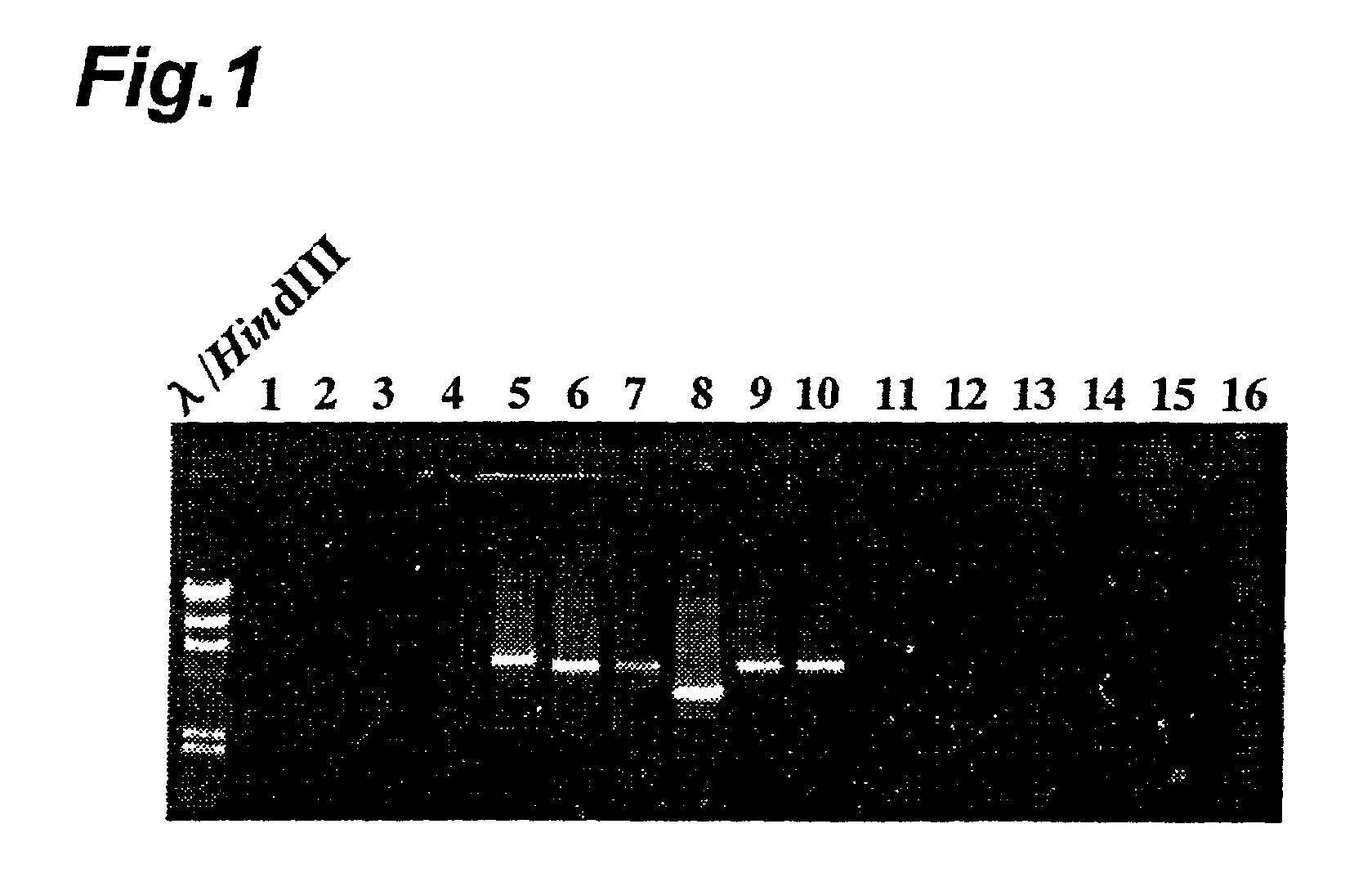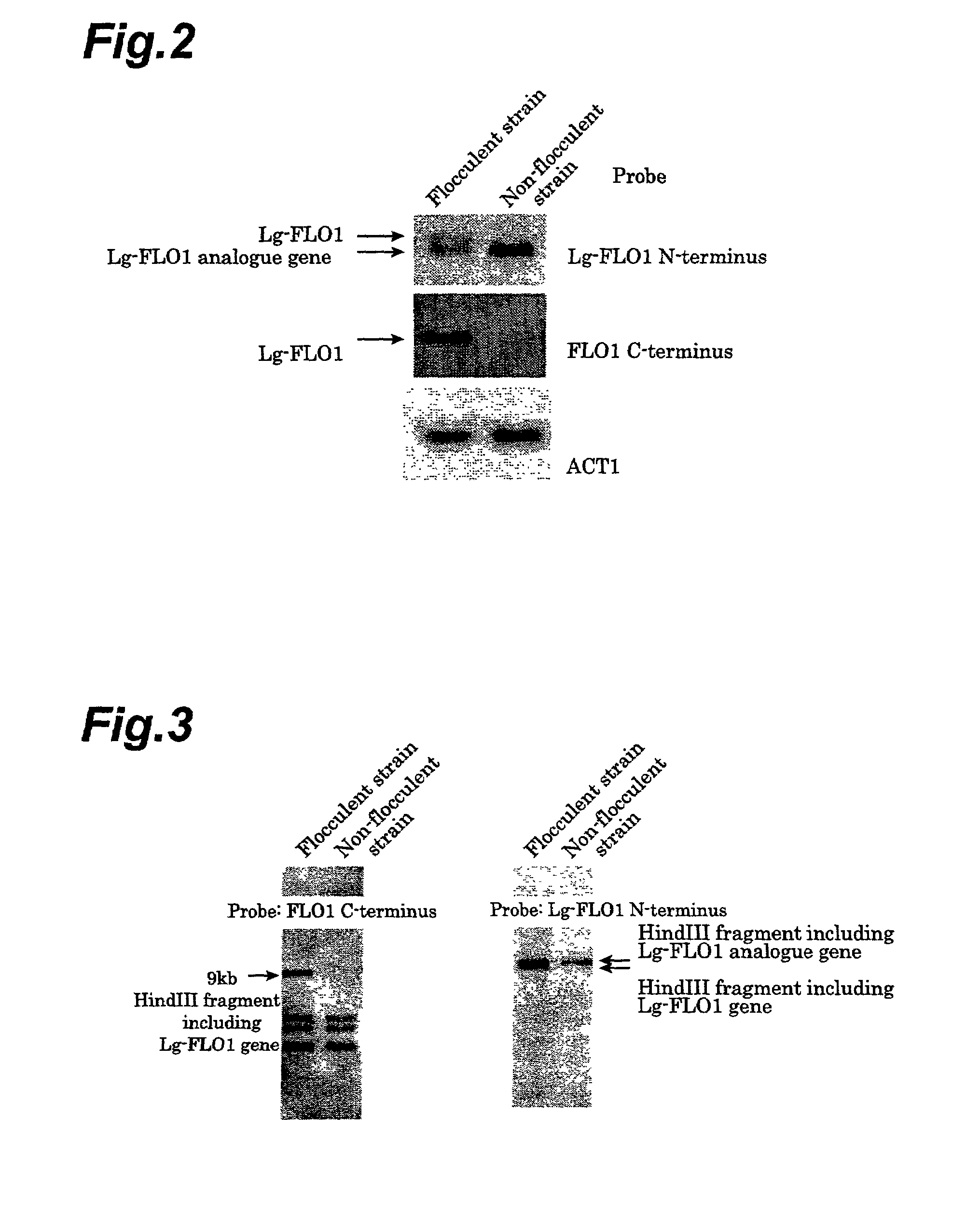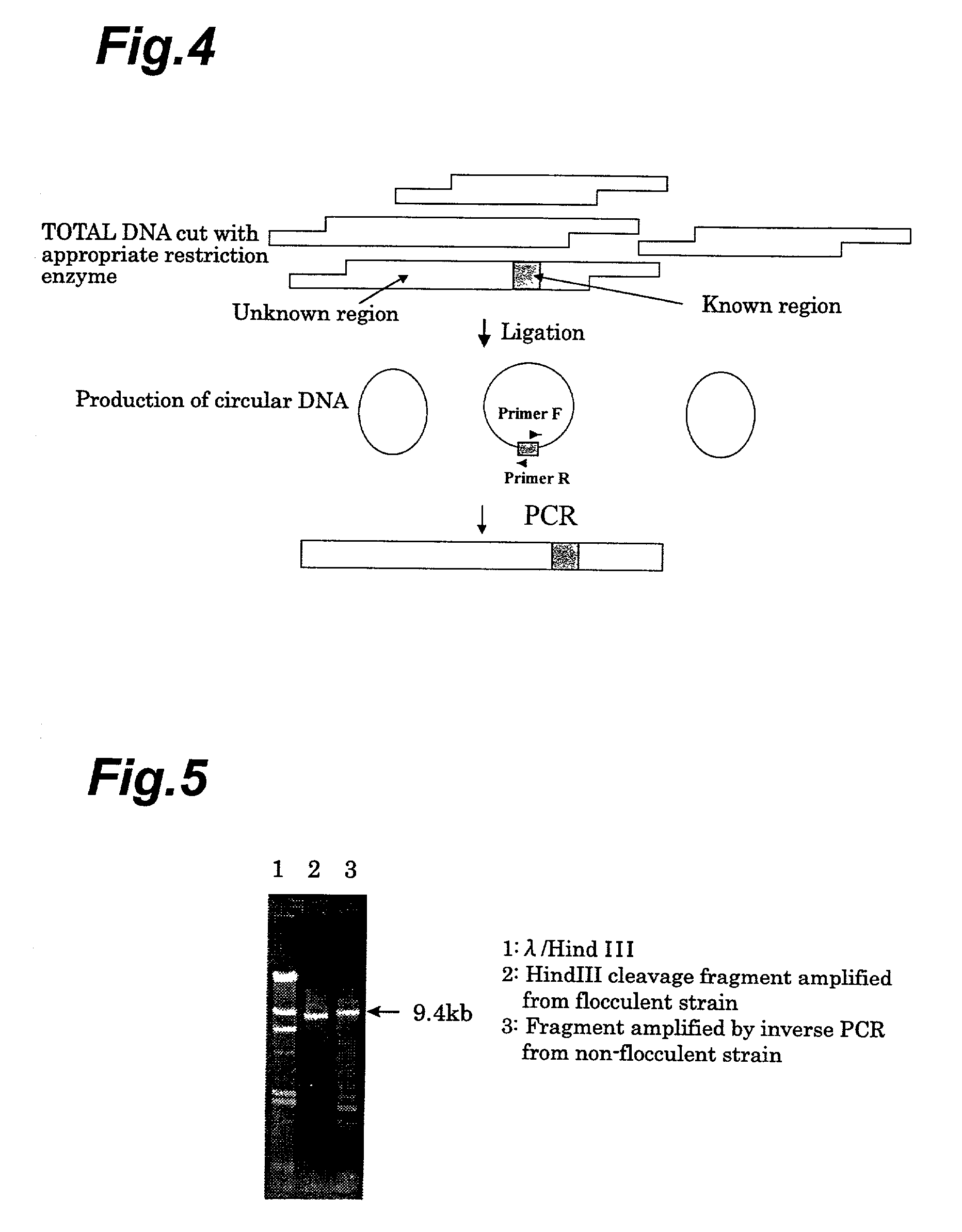Method of differentiating beer yeast
a technology of beer yeast and differentiating yeast, which is applied in the field of differentiating beer yeast, can solve the problems of alcoholic malt beverages with inferior aroma characteristics, lacked speed and accuracy, and most of them lack speed and accuracy. achieve the effect of high degree of accuracy
- Summary
- Abstract
- Description
- Claims
- Application Information
AI Technical Summary
Benefits of technology
Problems solved by technology
Method used
Image
Examples
example 1
(Obtaining Novel Fused Gene Containing a Portion of Lg-FLO1 Gene N-Terminal End, and Partial Determination of Base Sequence)
[0078]Flocculating genes according to flocculent strains and non-flocculent strains of bottom-fermenting yeast were subjected to Northern and Southern analysis. Extraction and electrophoresis of the total RNA were carried out after culturing of flocculent and non-flocculent bottom-fermenting yeast in the same manner as Comparative Example 1, according to the method of Schmitt et al. (Nucleic Acids Research, 18(10): 3091, 1990). The RNA in the gel after electrophoresis was subjected to blotting using a Hybond-N+ (product of Amersham-Pharmacia Biotech, KK.), according to the included protocol.
[0079]For Southern analysis, total DNA extracted in the same manner as Comparative Example 1 was digested with restriction enzyme HindIII (Takara Shuzo Co., Ltd.) and then electrophoresed with 1% agarose gel and subjected to blotting with Hybond-N+ (product of Amersham-Pharm...
example 2
(Utilizing Lg-FLO1 Analogue Gene to Differentiate Bottom-Fermenting Yeast)
[0090]A portion of the Lg-FLO1 analogue gene obtained in Example 1 was amplified by PCR for differentiation between bottom-fermenting yeast and wild yeast. The primers used for the PCR were sequences on the N-terminal portion of the Lg-FLO1 gene and a portion of the YIL169c gene included in the analogue gene. Specifically, the two primers 5′-GGAATACTGCCTCTTGGAGT-3′ (SEQ. ID. No.7) and 5′-GGATTCTTCAGCGTTGAAGT-3′ (SEQ. ID. No.8) were synthesized. These primers were used for PCR using the yeast total DNA as the template, in the same manner as Comparative Example 1. As shown in FIG. 8, this method allows differentiation even between bottom-fermenting yeast that has lost its flocculating property and wild yeast.
example 3
[0091]The base sequence of the common portion of Lg-FLO1 and the aforementioned analogue gene was used for differentiation between bottom-fermenting yeasts and wild yeasts. The yeasts which were differentiated are shown in Table 3. Nos. 1-16 in Table 3 correspond to the lane numbers in FIG. 9.
[0092]
TABLE 3Name of strainFlocculating(bottom-propertyName of strainfermenting yeast)evaluation(wild yeast) 1: NCYC965F011: Saccharomyces cerevisiae 2: NCYC1324F0 (ATCC 46967) 3: W204F012: Saccharomyces 4: W71F1 diastaticus 5: AJL3126F113: Pichia (IFO 0035) 6: NCYC512F214: Saccharomyces bayanus 7: NCYC719F2 (IFO 0676) 8: NCYC1250F215: Candida albicans 9: VLB202F2 (ATCC 10259)10: VLB He BruF216: Saccharomyces uvarum (ATCC 44968)
[0093]The sequences 5′-AACGTAGCATCAGGAAGTACACAAGCATGC-3′ (SEQ. ID. No.9) and 5′-GATCGGGTAATAGTAACCGGCGTACATGTA-3′ (SEQ. ID. No.10) were synthesized as primers for PCR. This set of primers was used for PCR using the yeast total DNA as the template, in the same m...
PUM
| Property | Measurement | Unit |
|---|---|---|
| temperature | aaaaa | aaaaa |
| temperature | aaaaa | aaaaa |
| temperature | aaaaa | aaaaa |
Abstract
Description
Claims
Application Information
 Login to View More
Login to View More - R&D
- Intellectual Property
- Life Sciences
- Materials
- Tech Scout
- Unparalleled Data Quality
- Higher Quality Content
- 60% Fewer Hallucinations
Browse by: Latest US Patents, China's latest patents, Technical Efficacy Thesaurus, Application Domain, Technology Topic, Popular Technical Reports.
© 2025 PatSnap. All rights reserved.Legal|Privacy policy|Modern Slavery Act Transparency Statement|Sitemap|About US| Contact US: help@patsnap.com



